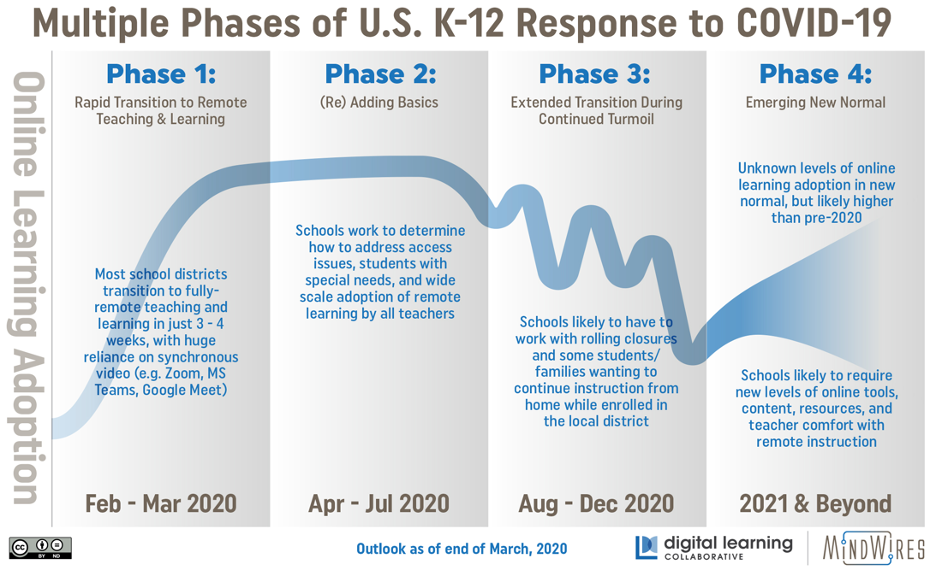Districts are launching online/hybrid programs in record numbers
Trends are starting to reveal themselves in the data.
Going back more than a year, in the graphic below we predicted that adoption of online and hybrid programs in 2021 and beyond would be higher than pre-COVID.
More recently, in many discussions at DLAC and in recent blog posts, we have talked about the growth of online and hybrid programs within districts.
Now as we track daily news feeds and conduct the research to publish state profiles and our 2021 Digital Learning Snapshot (planned for release in September), we are seeing more evidence of that growth.
For example:
[Tennessee] Education department announces 29 new virtual schools leads with this sentence:
“the Tennessee Department of Education announced the approval of 29 new virtual schools for the 2021-22 school year, bringing the total number of virtual schools operating across the state to 57”
The article further explains that the presence of online schools in the state is a result of both a 2011 law and pandemic-related regulations. The bottom line is that about 40% of districts in the state will offer an online or hybrid program, and about half of those are new for the 2021-22 school year.
Is Tennessee an outlier? Perhaps in number, but not in direction. Idaho is reporting eleven new district online schools. Clark County (NV) will be providing a full-time online learning option to just under 12,000 students. In the private school sector, a new provider is supporting Catholic schools in adding online options. Our state profiles will list many more of these programs, totaling in the low hundreds including tallies compiled by state agencies—and we are certain that is a significant undercount.
The article about Clark County mentions that “fewer students than expected — around 11,800, or 5 percent of the total registered — opted in to virtual learning.” Similarly, Baltimore County is reporting that about 3% of its students are enrolling in an online school option. Both of these valuable data points suggest that interest in full-time online school is more than double what it was before the pandemic, yet still represent a very small percentage of all students.
Given this interest from parents and students, are state policymakers supporting the expansion of online and hybrid learning? In some states such as Rhode Island, yes. In other states, pre-pandemic regulations allow districts to shift instruction to online, so no policy changes have been needed. In some states that had restrictions or outright bans on full-time online schools, those prohibitions remain. For example, New Jersey’s approach is captured in this headline: These parents want more virtual learning. New Jersey says they’re on their own.
Our best guess at this point is that the map we publish in the Snapshot in 2021, showing states allowing full-time online schools, won’t change much compared to the pre-pandemic map. Most states that allowed online schools will continue to do so, and most states that didn’t have online schools pre-pandemic still won’t. Within the states allowing online schools, however, we expect far more districts to be operating their own online and hybrid programs, and total student enrollments to go up significantly, although well below pandemic levels.

